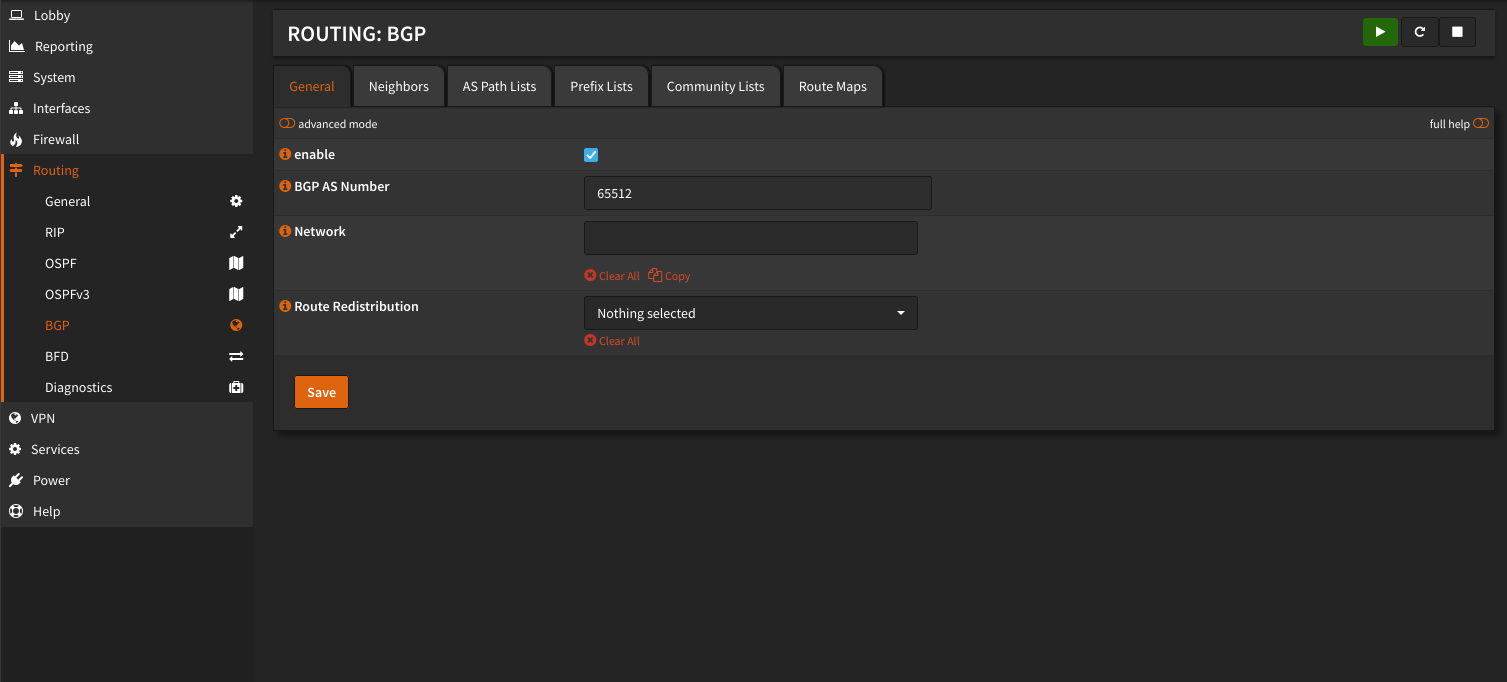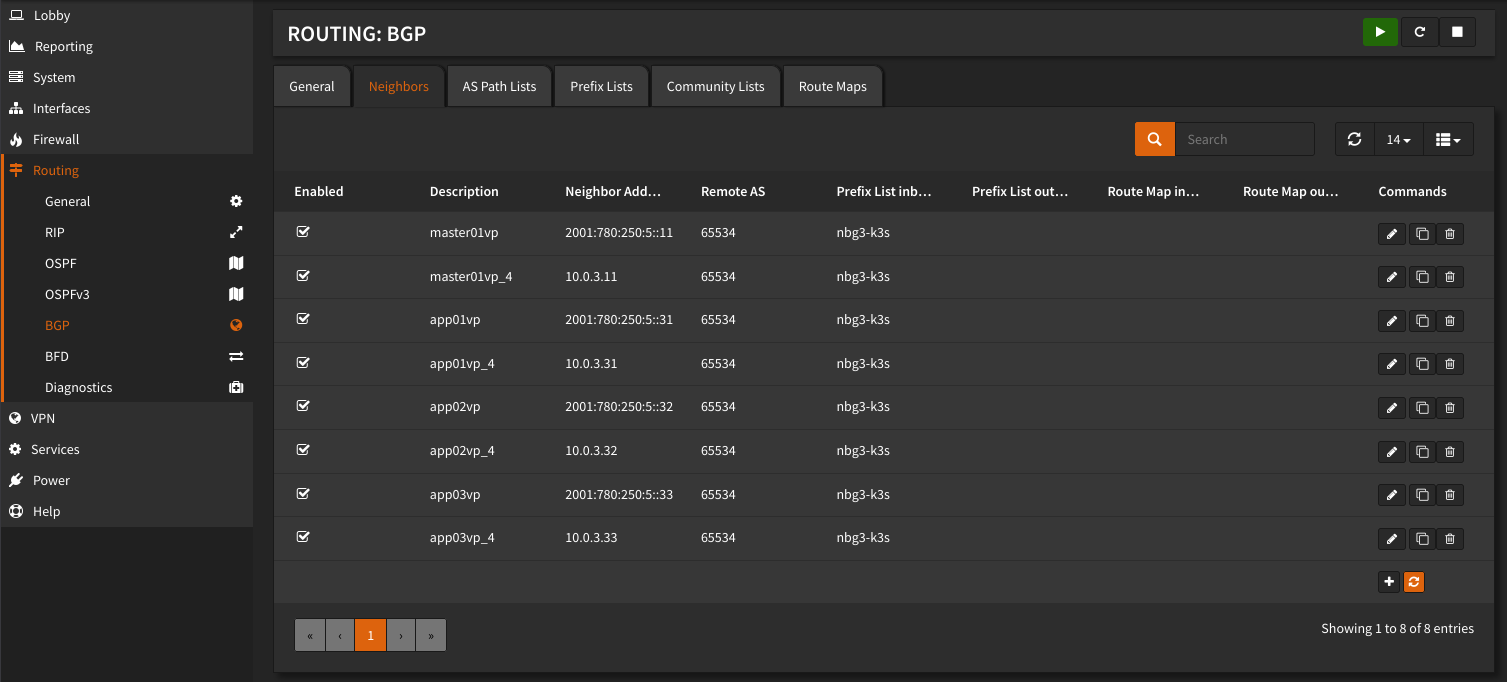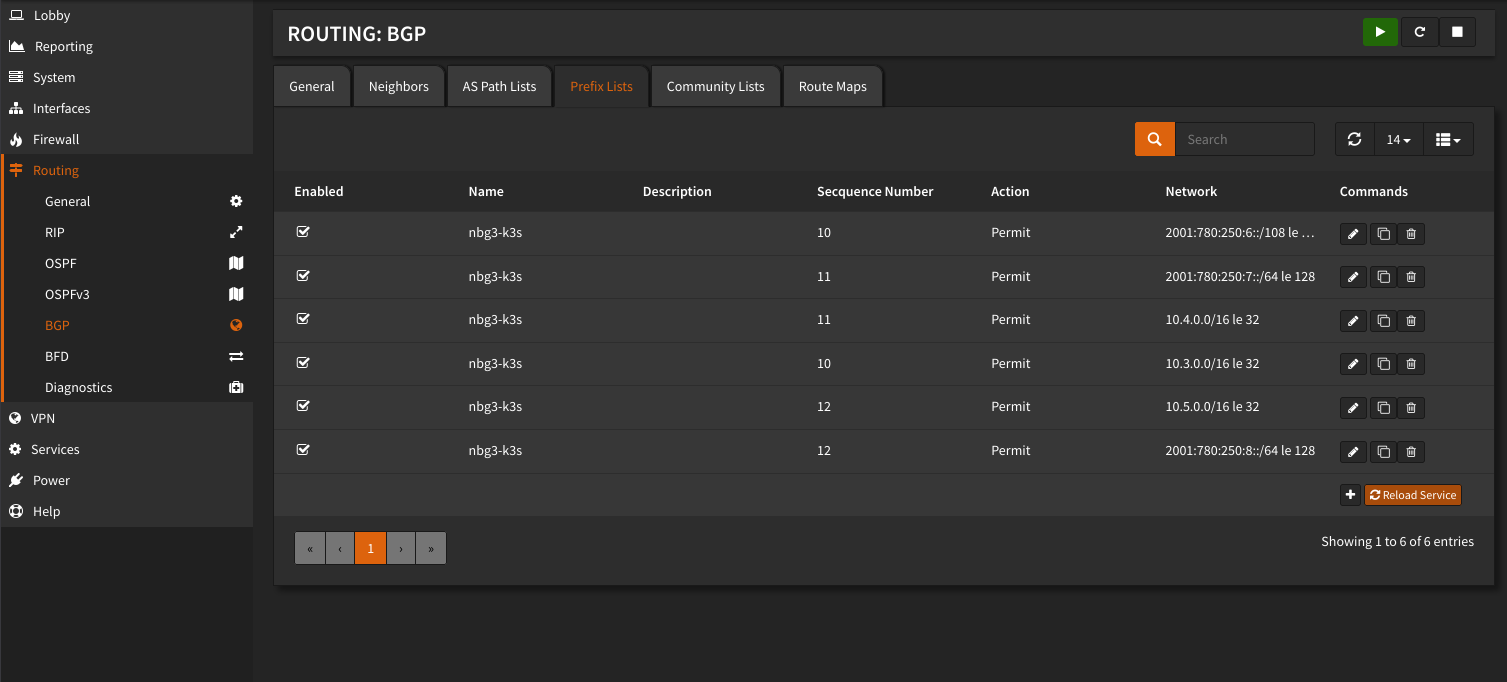K3S Setup
Description
Virtualized Kubernetes cluster based on K3S on Debian 11.
Features:
- IPv4/IPv6 dual stack network (Callico)
- Load balancer (MetalLB)
- RWO/RWX Storage with Longhorn
Requirements
One Debian VM as master node and at least 3 worker nodes for Longhorn. Master Node specifications:
- 2 Cores
- 4 GB RAM
- 32 GB Root Disk
App Node specifications:
- 4 Cores
- 8 GB RAM
- 32 GB Root Disk
- Second Disk for Longhorn
(in my case one dedicated 1 TB SSD per Node)
Network
Node Network:
- Network for Node IP's
- Recommended size
- IPv4 /24
- IPv6 /64
- Example
- IPv4: 10.0.3.0/24
- IPv6: 2001:780:250:5::/64
Service Network:
- Network for Service IP's
- IPv6 max Size /108
- Recommended size
- IPv4 /16
- IPv6 /108
- Example
- IPv4: 10.3.0.0/16
- IPv6: 2001:780:250:6::/108
Cluster Network:
- Network for Pod IP's
- Recommended size
- IPv4 /16
- IPv6 /64
- Example
- IPv4: 10.4.0.0/16
- IPv6: 2001:780:250:7::/64
Loadbalancer Network:
- Network for Loadbalancer (MetalLB)
- Example
- IPv4: 10.5.0.0/16
- IPv6: 2001:780:250:8::/64
Router or Firewall with BGP Support, in my case OPNSense.
Setup
Install requiered Software
The K3S Binary is required for the K3S cluster and calicoctl for the network.
curl -L https://github.com/k3s-io/k3s/releases/latest/download/k3s -o /usr/local/bin/k3s
curl -L https://github.com/projectcalico/calico/releases/latest/download/calicoctl-linux-amd64 -o /usr/local/bin/kubectl-calico
chmod +x /usr/local/bin/{k3s,kubectl-calico}
curl -L https://get.k3s.io/ -o install.sh
Additional Setting
Set higher fs Notifier limit
Add the line to /etc/sysctl.conf
Setup Private Registry (optional)
To use a Harbor as a proxy cache, create the following config file under /etc/rancher/k3s/registries.yaml
mirrors:
docker.io:
endpoint:
- "https://harbor.example.net/v2/dockerhub"
harbor.example.net:
endpoint:
- "https://harbor.example.net"
harbor.example.net with the name of your Harbor instance.
Replace dockerhub with the Name of your Proxy Cache Project.
Setup K3S Server (master Node)
Create K3S Config file under /etc/rancher/k3s/config.yaml
node-ip: 10.0.3.11,2001:780:250:5::11
service-cidr: 10.3.0.0/16,2001:780:250:6::/108 # service-network
cluster-cidr: 10.4.0.0/16,2001:780:250:7::/64 # pod-network
disable-network-policy: true
# Gloabal-DNS
cluster-domain: k3s.example.net # default `cluster.local`
# calico
flannel-backend: none
# to disable traefik ingress controler
#disable: traefik
Create Cluster
INSTALL_K3S_SKIP_DOWNLOAD=true ./install.sh
Setup K3S Agent (app Nodes)
Create K3S Config file under /etc/rancher/k3s/config.yaml
Get Token from Server Node under /var/lib/rancher/k3s/server/node-token
Join Cluster
INSTALL_K3S_SKIP_DOWNLOAD=true K3S_URL="https://[2001:780:250:5::11]:6443" K3S_TOKEN=<Token from Server Node> ./install.sh
Setup Network
Configure BGP on OPNSense
Install os-frr Plugin under System > Firmware > Plugin
Under Routing > General set the hook at enable
Configure BGP Number under Routing > BGP to a Privat AS (64.512 – 65.534) in my case 65512

Create a Neighbore entry for every K3S Node.

To prevent the K3S Cluster from anouncing other Networks then the defined, create a Prefix list with all K3S networks. After creating the Prefix List set the list for every Neighbor entry.

Install Calico
Install Calico in the Cluster
kubectl apply -f https://projectcalico.docs.tigera.io/manifests/calico.yaml
Create Calico BGP configuration with kubectl calico apply -f calico-bgp.yaml
---
apiVersion: projectcalico.org/v3
kind: BGPConfiguration
metadata:
name: default
spec:
logSeverityScreen: Info
nodeToNodeMeshEnabled: true
asNumber: 65534
serviceClusterIPs:
- cidr: 10.3.0.0/16
- cidr: 2001:780:250:6::/108
serviceExternalIPs:
- cidr: 10.3.0.0/16
- cidr: 2001:780:250:6::/108
# Metallb
serviceLoadBalancerIPs:
- cidr: 10.5.0.0/16
- cidr: 2001:780:250:8::/64
---
apiVersion: projectcalico.org/v3
kind: BGPPeer
metadata:
name: fw01
spec:
peerIP: 2001:780:250:5::1
#peerIP: 10.0.3.1
asNumber: 65512
keepOriginalNextHop: true
---
apiVersion: projectcalico.org/v3
kind: BGPPeer
metadata:
name: fw01-4
spec:
peerIP: 10.0.3.1
asNumber: 65512
keepOriginalNextHop: true
Create IPPools with kubectl calico apply -f calico-pools.yaml
---
apiVersion: crd.projectcalico.org/v1
kind: IPPool
metadata:
name: default-ipv4-ippool
spec:
cidr: 10.4.0.0/16
---
apiVersion: crd.projectcalico.org/v1
kind: IPPool
metadata:
name: default-ipv6-ippool
spec:
cidr: 2001:780:250:7::/64
Install MetalLB
Install MetalLB in the Cluster with Helm and Helmfile by executing helmfile apply
repositories:
- name: metallb
url: https://metallb.github.io/metallb
releases:
- name: metallb
namespace: metallb-system
createNamespace: true
chart: metallb/metallb
version: 0.13.7
values:
- speaker:
enabled: false
Create MetalLB AddressPool
apiVersion: metallb.io/v1beta1
kind: IPAddressPool
metadata:
name: default
namespace: metallb-system
spec:
addresses:
- 10.5.0.0/16
- 2001:780:250:8::/64
avoidBuggyIPs: true
Update
K3s
Update the master nodes first. When this is done. One worker node can be updated after the other.
curl https://github.com/k3s-io/k3s/releases/download/v1.24.8%2Bk3s1/k3s -sLo k3s; cp k3s /usr/local/bin/; service k3s-agent restart
Calico
Simple reinstall the Kubernetes Manifest
MetalLB
Use the newest Helm Chart version and run helmfile apply again.
